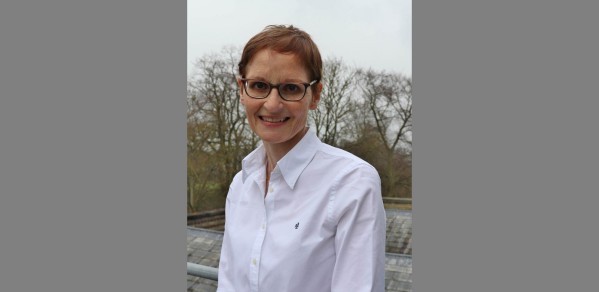
Humans consume a lot of cement. Global cement production in 2017 was a whopping 4.1 billion tons and hence equivalent to the weight of roughly 65 billion adults.
Wacky ideas quickly morph into plausible ones and sometimes you just need to park them for a while until something, or someone, sparks another idea and you see a way forward.
Professor Janet Lees
Janet Lees is a Professor of Civil Engineering at Cambridge and a Fellow of St John's College. She holds an EPSRC Established Career Fellowship and is a Director of Cambridge's EPSRC Centre for Doctoral Training in Future Infrastructure and Built Environment. She wrote the following article for the EPSRC Blog.
Concrete is a valuable and complex material
A prime usage of cement is to bond sand and rock together to create concrete.
Our research recognises concrete as a high value, high cost material. High value since we rely heavily on concrete structures to support the smooth functioning of society. High cost since cement production is responsible for 5-7 per cent of global CO2 emissions. Our aim is to develop new ways to capture the many benefits of concrete as a construction material while using much less cement. It's win-win.
However, concrete is a complex material. Concrete mixes vary and concrete starts as a semi-fluid material that hardens (hydrates) over time. In conventional concrete there are four ingredients: cement to act as a binder, water, sand and aggregates such as gravel. We mix these ingredients together and seek to control surrounding conditions such as moisture and temperature, while the material hardens. We then end up with greyish solid concrete.
But every concrete is different...
Different relative proportions of the ingredients can be selected. Sand and aggregates are mostly natural resources so their size, shape and chemical compositions vary. Cement is also a variable material that is processed and increasingly cement is replaced with waste materials or other binders with a lower environmental impact. Hardened concrete properties like strength change with time, are sensitive to manufacturing processes and depend on exposure conditions during hardening and over the lifetime of a structure. Ugh. The sheer number of permutations are rather overwhelming.
And so, yep, every concrete is different.
On the plus side, this chaos presents a terrific opportunity for our research to exploit. We 'deconstruct' the concrete mix ingredients to find new approaches to meet a specified performance using the minimum amount of cement, thereby mitigating the damaging environmental impact. The desired performance covers things like: how strong the concrete needs to be, how easy the material is to manufacture, how long the structure should last, etc. So we need good predictive models across this spectrum to isolate the most promising mix combinations and good experimental validation to show that the intended improvements actually work!
What is creativity about?
The great thing about research, and engineering in general, is this chance to think widely without preconceptions. And, to me, that is what creativity is all about. One irony is that the creative features of much of what we do are largely hidden to the naked eye. When our research leads to new concrete materials and systems for bridges, buildings, tunnels and energy generation, the concrete will, probably, still look rather greyish. But a measurable difference in CO2 emissions, reduced consumption of natural resources, lower embodied energy, structures that last longer with minimal maintenance, improved home and work environments, these things have a real impact on the quality of our lives.
In general, I think the lines between a wacky idea, a sort-of-plausible idea, and innovation are pretty fuzzy. Sometimes one leads to the other; sometimes it doesn't. And this applies equally well to research, teaching, and outreach. For example, at Cambridge we have an EPSRC Centre for Doctoral Training (CDT) in Future Infrastructure and Built Environment. CDT student-led sessions stretch the imagination of A-level students to design the Rio Olympics velodrome, or a self-sufficient home on a remote island. The vegetable and herb gardens growing on the office windowsills may, at first, seem somewhat wacky. But thanks to our students' creativity, these hydroponic plants (plants without soil) will potentially improve our air quality and reduce energy consumption.
Inspiring the next generation
Being surrounded by talented people with amazing ideas also inspires me. So, with 2018 being the Year of Engineering, what are my latest thoughts on increasing awareness and widening participation? Well at the crazier end there is the Great Concrete Mix Off with a week one challenge to create the best concrete with the lowest CO2 footprint. At the sort-of-plausible end is my children's book project where I have teamed up with a friend/illustrator to write fun engineering-related stories for four-to-six year-olds. I'll keep you posted about how we get on.
Although we don't explicitly preface engineering with the word 'creative', as we do with the 'creative' arts, creativity is at the heart of engineering. Wacky ideas quickly morph into plausible ones and sometimes you just need to park them for a while until something, or someone, sparks another idea and you see a way forward. And as engineers we have an enviable opportunity, and a great responsibility, to transform creative ideas into realities that can make a really positive difference.
So, bring on the next concrete showstopper!
Written by Professor Janet Lees for the EPSRC Blog.

